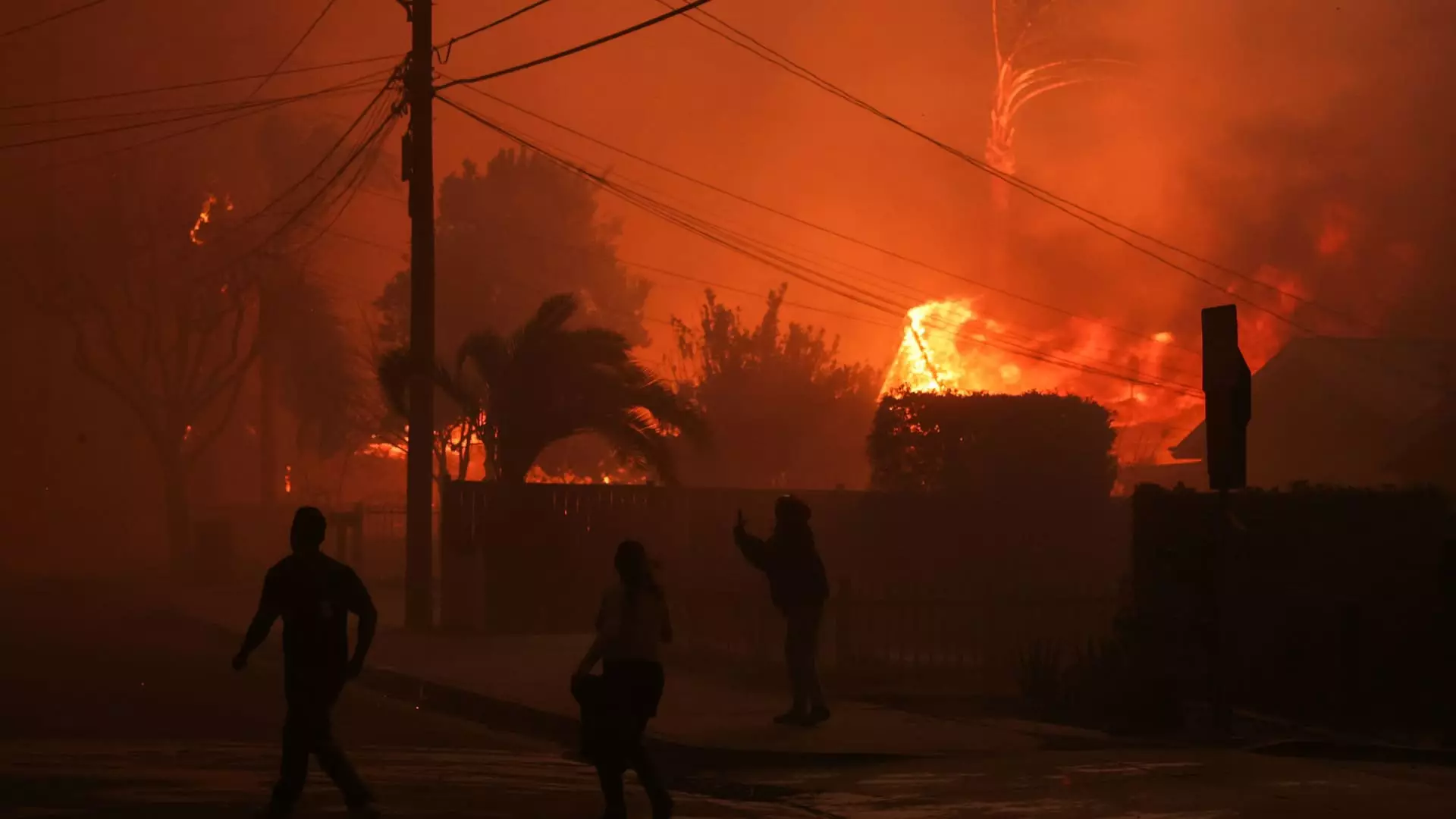The ongoing wildfires in California are not just a humanitarian and environmental crisis but are also influencing the financial landscape. A clear manifestation of this phenomenon is reflected in the stocks of major utility companies, particularly Edison International, whose Southern California Edison supplies power to the Los Angeles vicinity. Following the emergence of large-scale wildfires, Edison International experienced a striking 13% decline in stock value during mid-afternoon trading on Wednesday. The foreboding weather conditions, including high winds predicted to exacerbate fire spread, have heightened investor anxiety, resulting in a collective selling mindset across the market.
With tens of thousands of residents ordered to evacuate and the tragic loss of lives reported, the consequences of the wildfires extend far beyond immediate physical damage. Nearly 70,000 customers of Edison were without power on Wednesday, underscoring the operational challenges utilities face in managing infrastructure during crisis situations. Public utilities have been tasked with addressing wildfire risks for years, and the current gravity of the situation is a stark reminder of their ongoing struggles. Although previous wildfires in California are often traced back to power equipment failures, there has yet to be any concrete evidence linking Edison to this season’s fires. The absence of a filed Electric Service Incident Report (ESIR) provides some reassurance regarding Edison’s potential liability.
The past experiences of utilities, particularly those linked to severe financial repercussions from wildfires, are in the minds of investors. For instance, Pacific Gas and Electric Company (PG&E) infamously filed for bankruptcy in 2019, primarily due to liabilities incurred from fire-related events. Despite emerging from bankruptcy in 2020, the record still haunts the industry, causing lingering concerns about financial stability in the wake of natural disasters. Fortunately, the enactment of state law AB 1054 in 2020 has sought to limit future liabilities for utility companies, introducing a modicum of confidence in the stability of the market.
Despite legal protections, the fear and uncertainty driving investor sentiments remain palpable. Bank of America analyst Ross Fowler noted reports suggesting that some of Edison’s equipment may have been affected by current wildfires, implying the possibility of impending financial repercussions for the company. Jefferies analyst Julien Dumoulin-Smith reported that conversations with investors hinted at a “sell first, ask questions later” mentality, indicating a cautious approach in the market. The uncertainty is not isolated to Edison alone; stocks across the board for other utilities in California also took a hit, with PG&E shares down 4% and Sempra’s shares down 3%.
As wildfires continue to rage in California, the specter of risk looms large over the utility sector. While legislative measures have somewhat assuaged liability concerns, the combination of immediate catastrophes and lingering memories of financial turmoil shapes investor behaviour. The overall downtrend in utility stocks highlights the direct correlation between natural disasters and market responses. For investors and utilities alike, the current situation serves as a critical indicator of the volatile nature of the industry amid ongoing environmental challenges.

